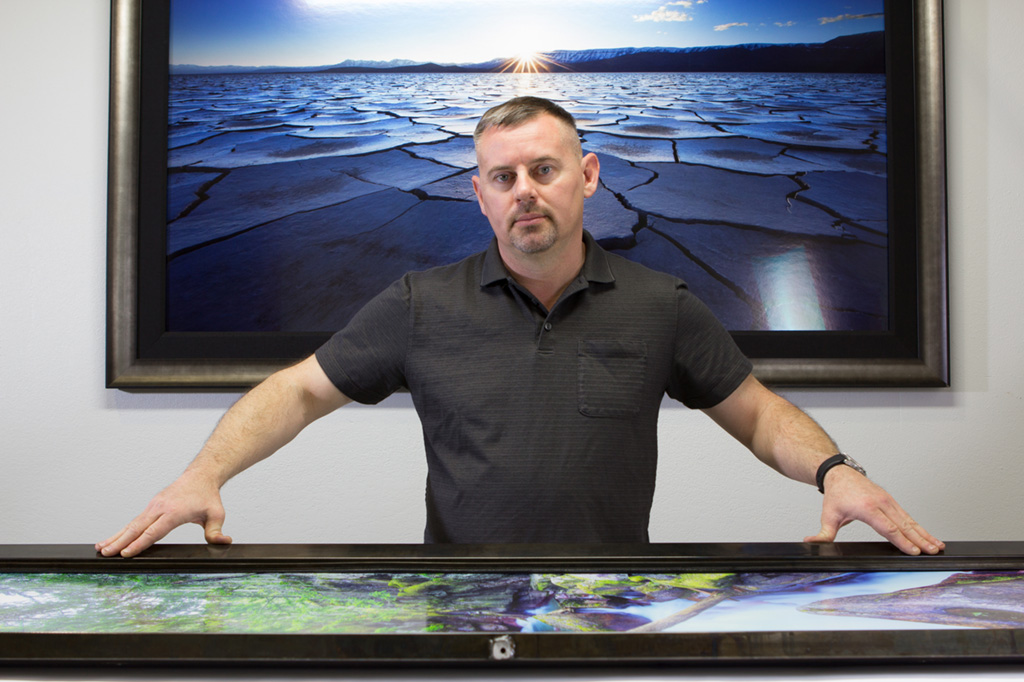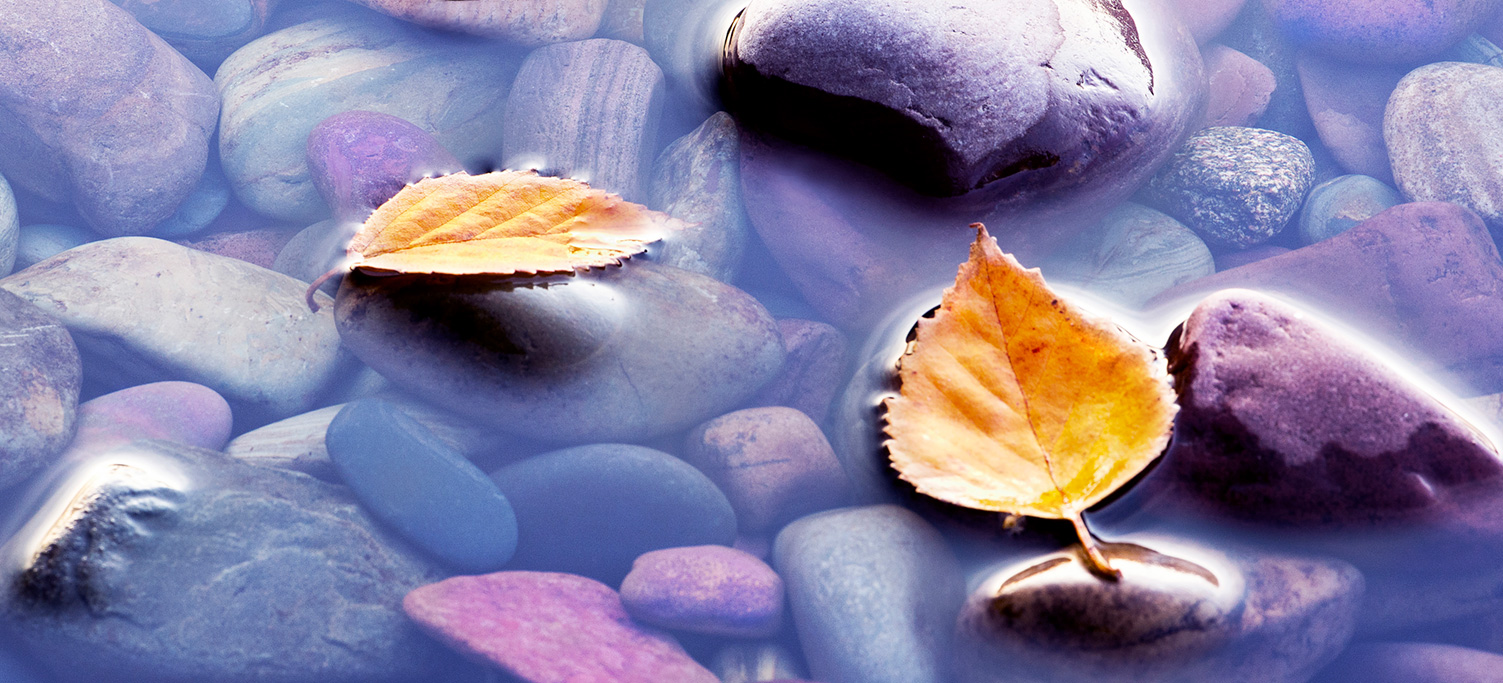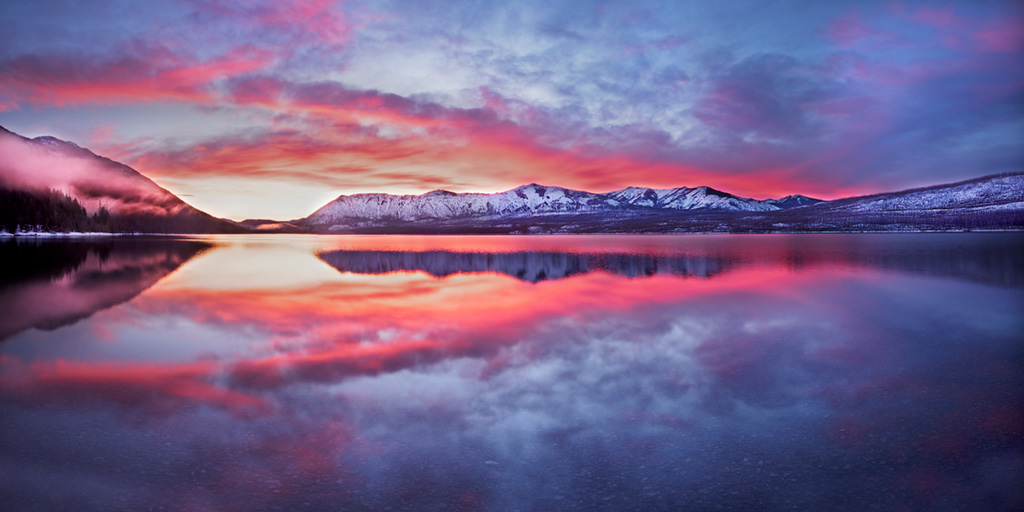Wind rustles the needles of nearby pine trees. The sun’s first golden ray of light extends above the mountains. It’s moving fast. The air is moist and there’s a musky smell, somewhere. As the sun slides above the Lewis Mountain Range, in northern Montana, warmth spills out and over the untouched land. It glistens across the water reflects the blue sky in droplets of dew on disheveled blades of grass. The musky smell gets stronger, and, then, you see it.
Five hundred pounds of sheer muscle with razor-sharp claws and alert ears. Its wet nose rises in the air sniffing for the next meal. It moves slowly with restrained power like it has been storing energy all night for this one moment. It sees you. And in one press of force, it stands on its hind legs to nine feet tall and barrels out a bone-chilling throaty roar.

Callihan in his gallery at the Village at Meridian. Gallery Photo: Dayne Ellis Johnson / RedFishTMG.com
Montana grizzly bears. They’re feared by many but not by professional fine art landscape photographer and U.S. Marine Corps veteran, Jeff Callihan. He spent four summers in Montana exploring Glacier National Park and peacefully living in his camper among hundreds of grizzly bears. He says grizzly bears are somewhat predictable. However, there is one thing that he did fear. And just the thought of it, Callihan says, made his blood run cold. It was the thought of making it as a full-time photographer.
“I remember thinking, ‘How does one become a full-time photographer?” Callihan said in a recent interview. “I had no idea how to do that, so I made a pact with myself to just keep taking photos.”
Callihan was born with a natural talent for photography. Both his grandfather and father were proficient photographers. However, he didn’t realize it was even an interest of his until his job, as a welding inspector, required that he take photos of imperfections. At that time, it was just a necessary part of the job. He had box camera with film that he had to ship off to get developed.
“The photos that came back were terrible,” Callihan recalled.
When he spent the time to find a new camera with adjustable settings, he also found what would become his greatest passion.
The following weekend he was camping by a lake in Michigan and became obsessed with getting the perfect sunrise shot. That was 20 years ago. Today, Callihan owns and operates his own landscape photography gallery in the Village at Meridian, the first of its kind in the Treasure Valley.

“Fall Perspectives” is an example of Jeff Callihan’s ability to capture nature’s sublime moments.
The gallery is an indoor display of Callihan’s many years spent in the outdoors. His photos are edited minimally, and all of the photos are hung with custom metal frames Callihan makes. Each frame takes him about a day to make. In order to open the gallery he welded 50 custom frames.
“I learned how to weld when I was 15,” Callihan said. “And it occurred me to one day that I could make wood frames, but I wondered what a metal frame would look like.”
He makes the frames out of tube steel. When he finished his first frame and hung it on the wall, Callihan says he realized that he might have stumbled on to something.
The metal frames are seemingly before their time. Callihan has had customers ask if the photos are actually TV screens. Seems fitting for the modern space he’s created in his gallery, with suede seating and metal and glass tables. But they’re not TV screens. They’re images that tell a story of the ruggedness found in a natural setting and the hard work Callihan has poured into each photo.
One of his most recognized pieces is a sunrise photo of Lake McDonald in Glacier National Park: golden yellow and magenta light spills across the lake with the snow-crested Lewis Mountain Range looming in the background. It’s easy to see why this photo is so popular, but it wasn’t an easy one to capture. It took Callihan 125 tries over a span of three years to capture that perfect moment.
It required waking up at 3 a.m. and hiking alone in the frigid darkness. And it required stubbornness, the drive to get that perfect shot and refuse to give up on it. “There were times where I would think to myself,
‘I don’t want to do this’,” Callihan said. “I was terrified hiking in the dark sometimes, but I needed that shot.”
And Callihan is no rookie to uncomfortable situations. He says that his time served in the United States Marine Corps has helped him deal with the uncomfortable. He served four years active duty and four years in the reserves.
“Without that training, I could have never done this,” Callihan said. “The Marine Corps has a way of de-sensitizing you and reinforcing mental toughness.”
He knew how to deal with, what most would call, unbearable situations. However, just like his struggle in figuring out how to become a fulltime photographer, Callihan had a hard time thinking of himself as a “creative.”
He started leading photography workshops and attending markets to sell his art, still not sure of himself as a true creative. He had branded himself for years as an analytical person with a good work ethic. He could build a truck from scratch, weld and forge metal, and shoot at and hit targets that one cannot see with the naked eye but—a creative?
“It was only 10 years ago that I really admitted and embraced that I was a creative,” Callihan said. “And when I did, it all changed for me.”

